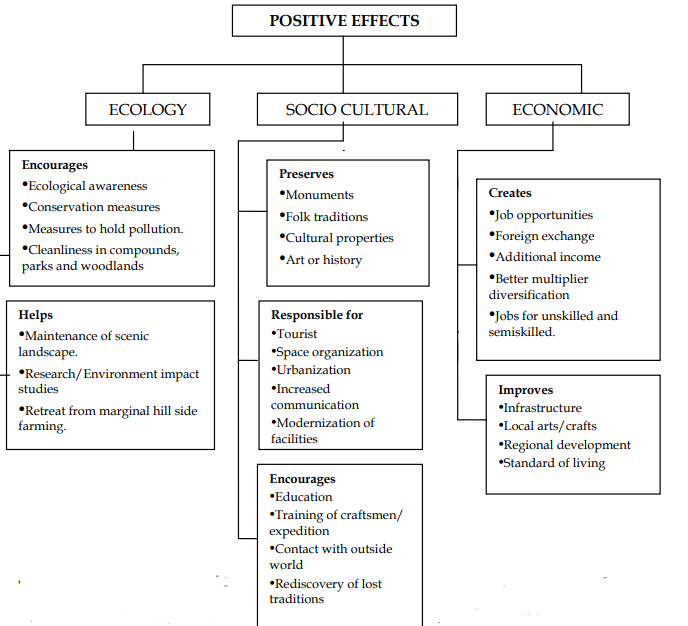The degradation of Himalayas has emerged as a major area of concern worldwide. The Himalayan range which till quite recently was untouched by man’s greed for land and resources has now come under pressure from all corners in the name of development and Tourism which resulted in to become a vulnerable fragile zone of earth. The Himalayan region constitutes about 18 percent of total area and 10 percent population of the country. These areas are the treasure houses for
resources such as, water, biological diversity, minerals, forest produce, agricultural products, tourism, recreation etc. but have tremendously been affected by natural and man-made factors.
Himachal Pradesh as a part of Himalayas has of late recorded significant strains on its eco-system.
Creation of the special infrastructure for human settlement, increasing demand for fuel wood for the tourists, towns and local people is met locally from the forests. The forests are still the main source of energy.
IMPACTS OF TOURISM:
Tourism brings development in terms of infrastructure, connectivity by road and air, encourages local skills, and helps mobility and better understanding of culture. With these positive benefits, come the negative impacts like ecological disturbances, cultural mix and changes of social
structure and physical changes.
Positive Effects of Tourism on the Environment:
The positive impacts can be summarized as under:
1. Economic benefits to the society i.e flow in the form of foreign exchange earnings, direct and indirect employment opportunities created due to the development of tourism and the associated infrastructure, and the resultant income multiplier effects. It also leads to increased government revenues in the form of various kinds of taxes levied on tourism activities.
2. Improvement and preservation of parks and cultural heritage properties. Natural parks are good examples of these.
3. The tourism activities also lead to better resource availability for the construction of infrastructure and maintenance of heritage properties and parks due to the combined effect of three factors.
- The historical monuments, nature parks, and cultural traditions are projected to attract tourists, there is increased allocation of resources for their maintenance and publicity from the government.
- The visiting tourists pay for their visits to these monuments, the funds so received add to the available pool.
- The combined effect of increased expenditure of the government on the creation of infrastructure and publicity results in increased tourist arrivals.

4. Tourism also promotes cross-cultural exchanges with tourists and resident populations learning more about each other’s culture. In a multi-ethnic society such as India, the domestic tourism can ideally help achieve cross-cultural understanding.
5. The tourism infrastructure utilizes the idle and wasteland in the area.
Negative Effects of Tourism on the Environment
The Negative impacts occur when the level of visitor use is greater than the environment’s ability to cope with this use within the acceptable limits of change.
- Uncontrolled conventional tourism poses potential threats to many natural areas around the world.
- It can put enormous pressure on an area and lead to impacts such as soil erosion, increased pollution, discharges into the sea, natural habitat loss, increased pressure on endangered species, and heightened vulnerability to forest fires.
- It often puts a strain on water resources, and it can force local populations to compete for the use of critical resources.

Both positive and negative environmental consequences lead to the management part of it. The challenge is to achieve the balance between the frequently competing demands of tourism and environmental conservation. The other major area of concern is in terms of the economic benefits and employment to the local community. The studies done on the Himachal region showed that out of the total 1441 jobs created by tourism in the Manali region of Himachal Pradesh, most of the jobs had gone to the expatriates and hardly 10% of the jobs were taken by the native people. The local people were low paid and they refrained from joining these because of the social consideration.